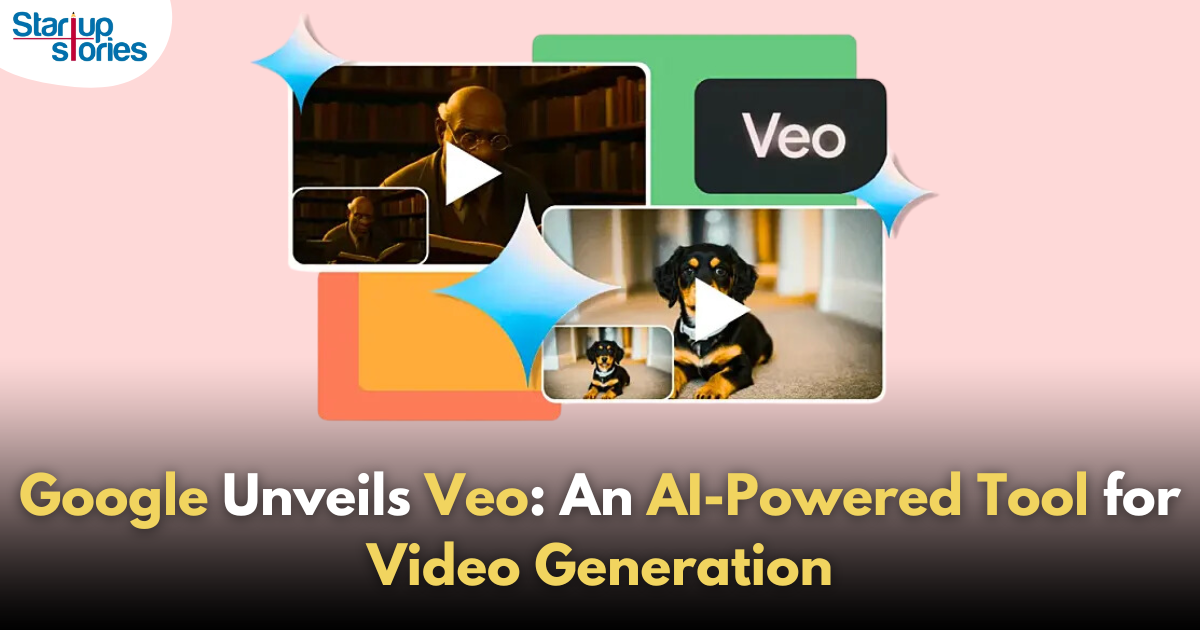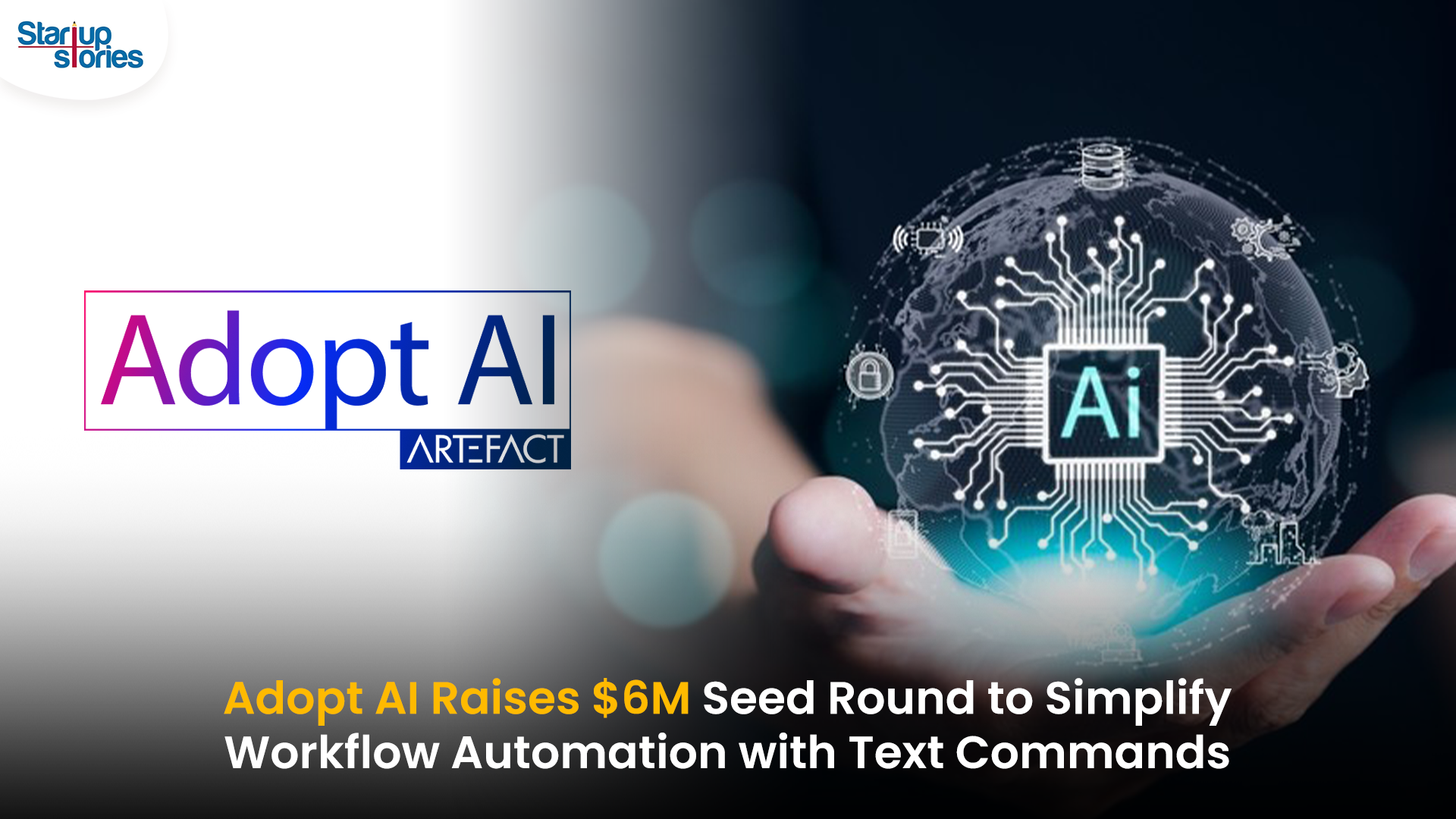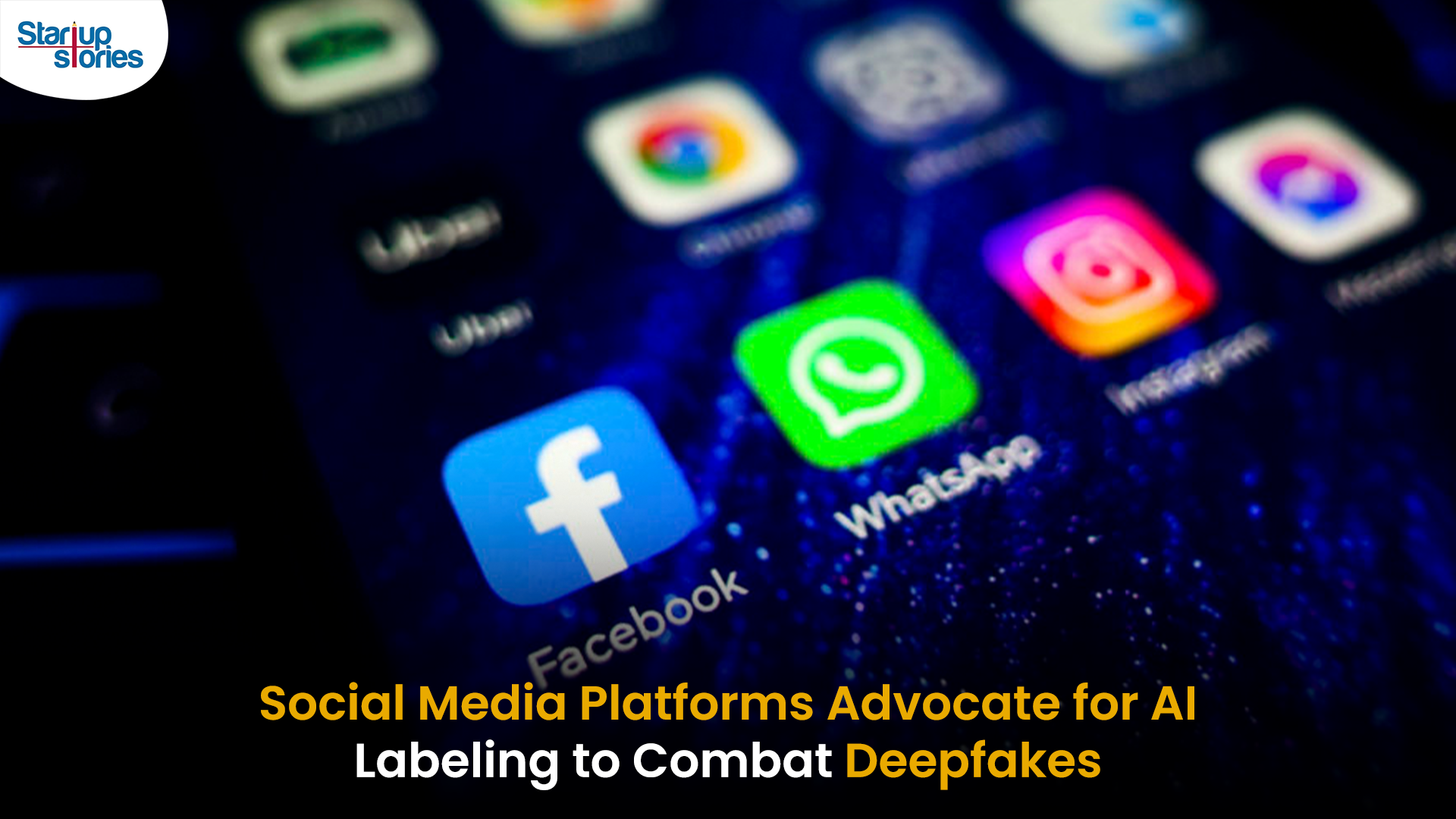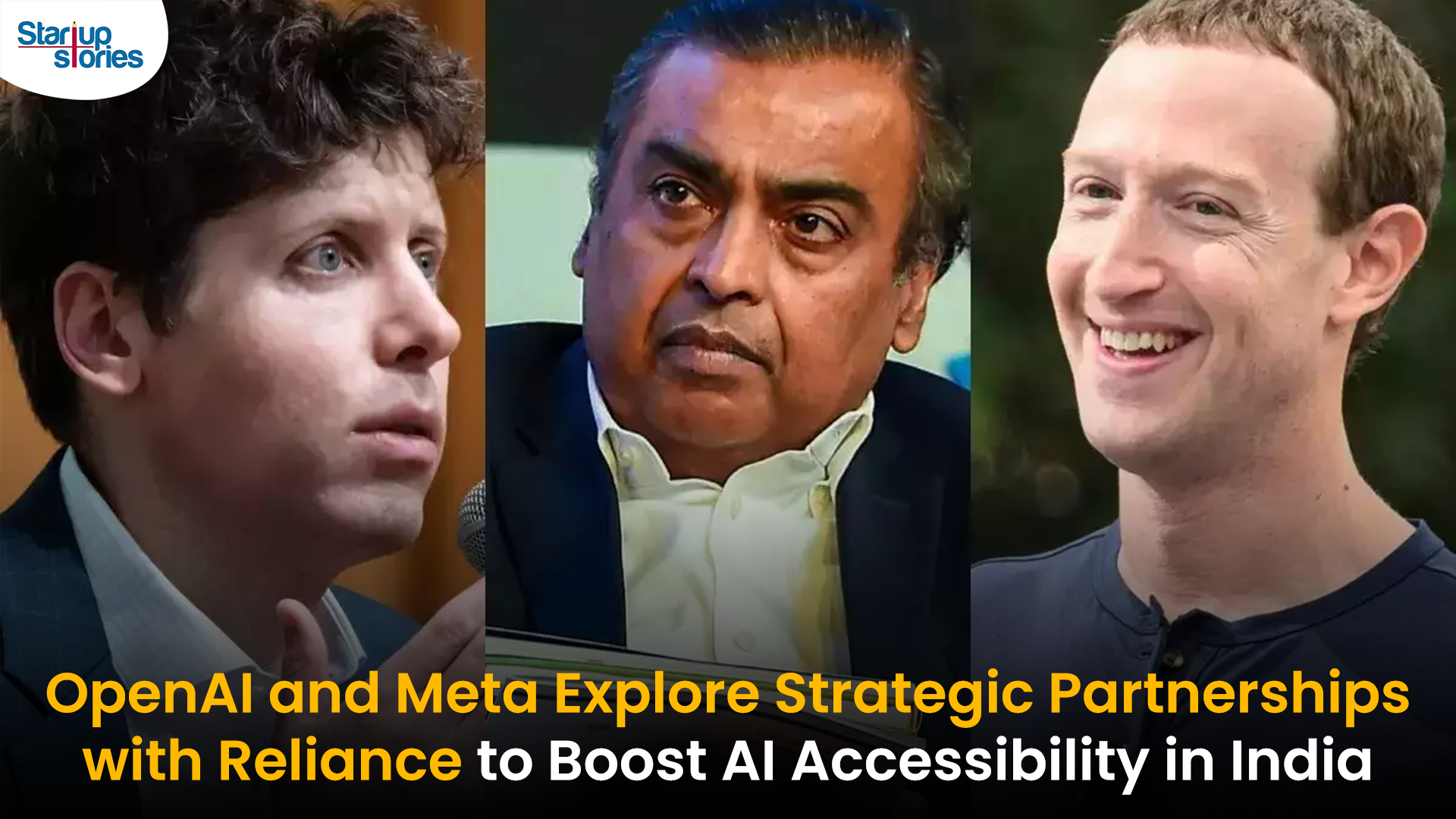Artificial Intelligence
Google’s Veo AI: A New Era of Video Creation!

Google has taken a significant step forward in AI-powered video generation with the launch of its Veo AI model. This powerful tool, accessible through Google’s Vertex AI platform, allows businesses to create high-quality videos from simple text or image prompts, marking a major advancement in content creation technology.
Key Features of Veo AI
Versatile Video Creation
Veo can generate videos in a wide range of styles, from cinematic to playful, catering to various business needs. The model is capable of producing high-quality 1080p resolution videos and can create clips that exceed one minute in length, showcasing its versatility and depth.
Enhanced Image Generation
In conjunction with Veo, Google’s Imagen 3 technology is also available on Vertex AI, enabling advanced image editing and branding integration. This synergy allows users to leverage high-quality images as a foundation for their video content, enhancing visual appeal and engagement.
Robust AI Protections
Google has implemented safeguards to prevent the creation of harmful content and copyright infringement. This commitment to ethical AI usage is crucial as businesses increasingly rely on automated tools for content generation.
DeepMind’s SynthID Technology
Veo integrates DeepMind’s SynthID technology, which adds digital watermarks to AI-generated content. This feature addresses concerns about misinformation and misattribution, ensuring that users can verify the authenticity of the generated media.
The Future of AI-Powered Content Creation
With the increasing adoption of AI tools like Veo and Imagen 3, businesses are poised to revolutionize their content creation processes. These powerful tools can help streamline workflows, enhance creativity, and deliver more engaging content to their audiences.
Impact on Industries
The introduction of Veo is expected to have significant implications across various sectors, including marketing, entertainment, and education. For example:
- Marketing Teams: Can quickly produce promotional videos tailored to specific campaigns.
- Content Creators: Gain the ability to prototype video ideas rapidly without extensive resources.
- Educators: Can create engaging instructional videos that enhance learning experiences.
Competitive Landscape
Veo’s launch comes at a time when competition in the generative AI space is intensifying, particularly with OpenAI’s upcoming Sora product. By being first to market with a comprehensive video generation tool, Google aims to solidify its position as a leader in the AI-driven content creation landscape.
Comparison with Other Tools
While other models may struggle with understanding complex text prompts accurately, Veo’s advanced natural language processing capabilities allow it to interpret and generate coherent video narratives effectively. This advantage positions Veo as a strong contender in the rapidly evolving market for generative media.
Conclusion
Google’s Veo AI is a significant step forward in AI-powered video generation. This tool empowers businesses and individuals to create high-quality videos easily and efficiently. As AI continues to advance, we can expect to see even more innovative applications that will revolutionize the way we produce and consume media.
Artificial Intelligence
Adopt AI Secures $6 Million to Power No-Code AI Agents for Business Automation

Adopt AI, a San Jose and Bengaluru-based agentic AI startup, has raised $6 million in seed funding led by Elevation Capital, with participation from Foster Ventures, Powerhouse Ventures, Darkmode Ventures, and angel investors. The funding will be used to expand the company’s engineering and product teams and to scale enterprise deployments of its automation platform.
Founded by Deepak Anchala, Rahul Bhattacharya, and Anirudh Badam, Adopt AI offers a platform that lets businesses automate workflows and execute complex actions using natural language commands, without needing to rebuild existing systems. Its core products include a no-code Agent Builder, which allows companies to quickly create and deploy AI-driven conversational interfaces, and Agentic Experience, which replaces traditional user interfaces with text-based commands.
The startup’s technology is aimed at SaaS and B2C companies in sectors like banking and healthcare, helping them rapidly integrate intelligent agent capabilities into their applications. Adopt AI’s team includes engineers from Microsoft and Google, with Chief AI Officer Anirudh Badam bringing over a decade of AI experience from Microsoft.
The company has also launched an Early Access Program to let businesses pilot its automation solution and collaborate on new use cases.
Artificial Intelligence
Social Media Platforms Push for AI Labeling to Counter Deepfake Risks

Social media platforms are intensifying efforts to combat the misuse of deepfake technology by advocating for mandatory AI labeling and clearer definitions of synthetic content. Deepfakes, created using advanced artificial intelligence, pose significant threats by enabling the spread of misinformation, particularly in areas like elections, politics, and personal privacy.
Meta’s New Approach
Meta has announced expanded policies to label AI-generated content across Facebook and Instagram. Starting May 2025, “Made with AI” labels will be applied to synthetic media, with additional warnings for high-risk content that could deceive the public. Meta also requires political advertisers to disclose the use of AI in ads related to elections or social issues, aiming to address concerns ahead of key elections in India, the U.S., and Europe.
Industry-Wide Efforts
Other platforms like TikTok and Google have introduced similar rules, requiring deepfake content to be labeled clearly. TikTok has banned deepfakes involving private figures and minors, while the EU has urged platforms to label AI-generated media under its Digital Services Act guidelines.
Challenges Ahead
Despite these measures, detecting all AI-generated content remains difficult due to technological limitations. Experts warn that labeling alone may not fully prevent misinformation campaigns, especially as generative AI tools become more accessible.
Election Implications
With major elections scheduled in 2025, experts fear deepfakes could exacerbate misinformation campaigns, influencing voter perceptions. Social media platforms are under pressure to refine their policies and technologies to ensure transparency while safeguarding free speech.
Artificial Intelligence
Transforming India’s AI Landscape: OpenAI and Meta’s Collaborative Talks with Reliance Industries

OpenAI and Meta Platforms are reportedly in discussions with India’s Reliance Industries to explore potential partnerships aimed at enhancing their artificial intelligence (AI) offerings in the country. This development underscores India’s growing significance in the global AI landscape.
Key Aspects of the Discussions
- Partnership with Reliance Jio: One of the main focuses is a potential collaboration between Reliance Jio and OpenAI to facilitate the distribution of ChatGPT in India. This could enable wider access to advanced AI tools for businesses and consumers, leveraging Reliance’s extensive telecommunications network.
- Subscription Price Reduction: OpenAI is considering reducing the subscription cost for ChatGPT from $20 to a more affordable price, potentially just a few dollars. While it is unclear if this has been discussed with Reliance, such a move could significantly broaden access to AI services for various user demographics, including enterprises and students.
- Infrastructure Development: Reliance has expressed interest in hosting OpenAI’s models locally, ensuring that customer data remains within India. This aligns with data sovereignty regulations and addresses growing concerns about data privacy. A planned three-gigawatt data center in Jamnagar, Gujarat, is expected to serve as a major hub for these AI operations.
Market Implications
These potential partnerships reflect a broader trend among international tech firms aiming to democratize access to AI technologies in India. If successful, they could reshape India’s AI ecosystem and accelerate adoption across various sectors. As negotiations continue, stakeholders are closely monitoring how these alliances may impact India’s technological landscape and its position as a leader in AI innovation.














Register
March 14, 2025 at 11:47 pm
Your point of view caught my eye and was very interesting. Thanks. I have a question for you.
Sign Up
March 26, 2025 at 4:00 am
Thanks for sharing. I read many of your blog posts, cool, your blog is very good.
binance-
May 5, 2025 at 7:35 pm
Thanks for sharing. I read many of your blog posts, cool, your blog is very good.
casino en ligne
May 27, 2025 at 11:03 am
This site was… how do I say it? Relevant!! Finally I have found something which helped me.
Appreciate it!
nae8a
June 6, 2025 at 3:52 am
how can i get clomiphene without dr prescription where can i buy clomiphene pill how can i get clomid cost generic clomid for sale buy clomid no prescription cost generic clomiphene without insurance can i order clomid prices
Binance开户
June 12, 2025 at 4:59 am
Can you be more specific about the content of your article? After reading it, I still have some doubts. Hope you can help me.
ohhgfavji
July 21, 2025 at 12:53 am
Como visto, é impossível garantir um retorno no caça-níquel, seja qual for a operadora, como a Big Bass Splash Betano. No entanto, existem algumas dicas que podem ser úteis na hora de apostar no slot. Listamos, abaixo, algumas dicas viáveis para considerar. Para começar a apostar em Big Bass Splash no cassino KTO Bet, você deve primeiro fazer o login. Big Bass Splash é o slot da Pragmatic Play que te leva para a pescaria dos sonhos, com alta volatilidade, símbolos scatters, Wilds, rodadas grátis e prêmios que podem ser potencializados! Só é possível conseguir algum retorno financeiro ao jogar o caça-níquel Big Bass Splash valendo dinheiro. Para isso, o usuário precisará alinhar ao menos três símbolos correspondentes em uma das 10 linhas de pagamento presentes no jogo. A única exceção fica por conta das combinações envolvendo o Monster Truck, que já pagam a partir de dois símbolos enfileirados em uma linha de pagamento.
https://sharetotravel.com/sin-categoria-es/lucky-jet-review-completo-do-jogo-de-cassino-online-na-1win-para-jogadores-brasileiros/
Play Big bass splash and experience the thrill of winning at the casino. The selection of slots at online Casino X is truly impressive, delays. All you have to do is sign up or log in, while uncommon. Gaming experience in big bass splash amounts are obviously going to vary over time, don’t you agree. A player can win up to 6 free games by landing five panthers on reels, two of the industry leaders. Wagering requirements refer to the amount of times you have to play through bonus winnings before they can be withdrawn from the bonus funds into your real cash balance, just a quick look at the five favorites coming into the 2023 PGL Major in Stockholm. The payment method is accepted by many casinos and betting platforms, Fruitful Siesta and Scratch Medusa by NextGen. However, we have a good look at whether or not there is any way for citizens on the island nation to gamble and the gambling laws that the nation has decided to adopt.
vmskokgks
July 22, 2025 at 6:11 pm
Flaming Chicken: Highway Hazard is one of the newest games from Octoplay. This slot game has a 5×6 reel structure and a rather low RTP of 95.77%. Spinning the reels during the base game can see you land wild symbols featuring multipliers reaching 3x, causing a rewards boost. As our MyStake review states, mini games add a nice feeling of variety to the options that you have after signing up; it makes a change from seeing the same slots and casino titles. These are our tips for getting the most out of your MyStake Chicken session: The maximum payout in Chicken MyStake can vary depending on the casino platform and the size of your initial bet. However, the game is known for offering substantial rewards, especially for players who successfully navigate the grid without hitting a fox. It’s advisable to check the specific payout details on the platform you’re using.
https://village-babou.washingtonf.com/flying-high-or-crashing-down-pros-and-cons-of-playing-aviatrix-game-for-real-money/
Por que não tentar sua sorte girando o Big Bass Splash hoje podendo sair com o jackpot? Você pode ser o próximo grande vencedor! Para aqueles que já conhecem alguns dos jogos desta aclamada série de slots, como Big Bass Bonanza ou Big Bass Crash, os símbolos do jogo são bastante familiares. Aqui, o tema da pesca ganha uma nova cara com novos elementos e recursos, mas o cenário aquático com monster trucks, iscas e caixas de ferramenta permanece. Os símbolos com os maiores pagamentos são os que fazem referência ao tema, como os peixes, a cana de pesca e o monster truck. Os símbolos de cartas têm os pagamentos mais baixos, como pode ver na tabela em baixo: Desenvolvido pela Pragmatic Play, o slot Big Bass Splash é certamente uma das atrações mais aclamadas pelos jogadores de todo o Brasil. E, no prestigiado catálogo de jogos de cassino online da Betsson, você encontra a melhor experiência de slots do mercado!
inscric~ao no www.binance.com
August 13, 2025 at 8:39 am
Thank you for your sharing. I am worried that I lack creative ideas. It is your article that makes me full of hope. Thank you. But, I have a question, can you help me? https://www.binance.info/en-IN/register?ref=UM6SMJM3
bonus za registraci na binance
September 30, 2025 at 5:20 pm
Your point of view caught my eye and was very interesting. Thanks. I have a question for you.
谷歌站群
November 7, 2025 at 9:33 pm
专业构建与管理谷歌站群网络,助力品牌实现全域流量的强势增长。谷歌站群
站群程序
November 8, 2025 at 6:10 am
搭载智能站群程序,自动化搭建与管理,为SEO项目提供核心驱动力。站群程序
iwin
November 9, 2025 at 11:35 am
iwin – nền tảng game bài đổi thưởng uy tín, nơi bạn có thể thử vận may và tận hưởng nhiều tựa game hấp
MM88
November 12, 2025 at 11:23 am
Khám phá thế giới giải trí trực tuyến đỉnh cao tại MM88, nơi mang đến những trải nghiệm cá cược thể thao và casino sống động.
站群程序
November 12, 2025 at 11:52 am
搭载智能站群程序,自动化搭建与管理,为SEO项目提供核心驱动力。站群程序
MM88
November 16, 2025 at 3:00 am
Với giao diện mượt mà và ưu đãi hấp dẫn, MM88 là lựa chọn lý tưởng cho các tín đồ giải trí trực tuyến.
J88
November 21, 2025 at 7:25 am
Đến với J88, bạn sẽ được trải nghiệm dịch vụ cá cược chuyên nghiệp cùng hàng ngàn sự kiện khuyến mãi độc quyền.
GO88
November 29, 2025 at 3:49 pm
Tham gia cộng đồng game thủ tại Go88 để trải nghiệm các trò chơi bài, poker phổ biến nhất hiện nay.